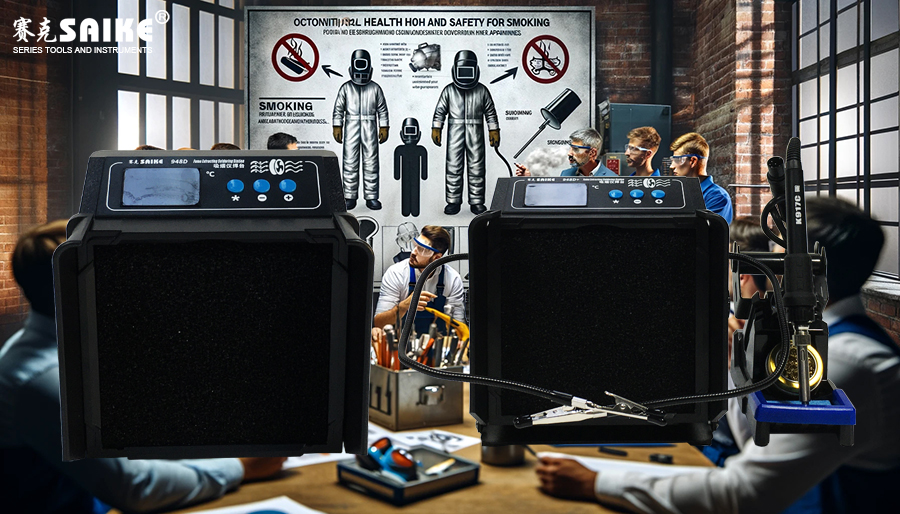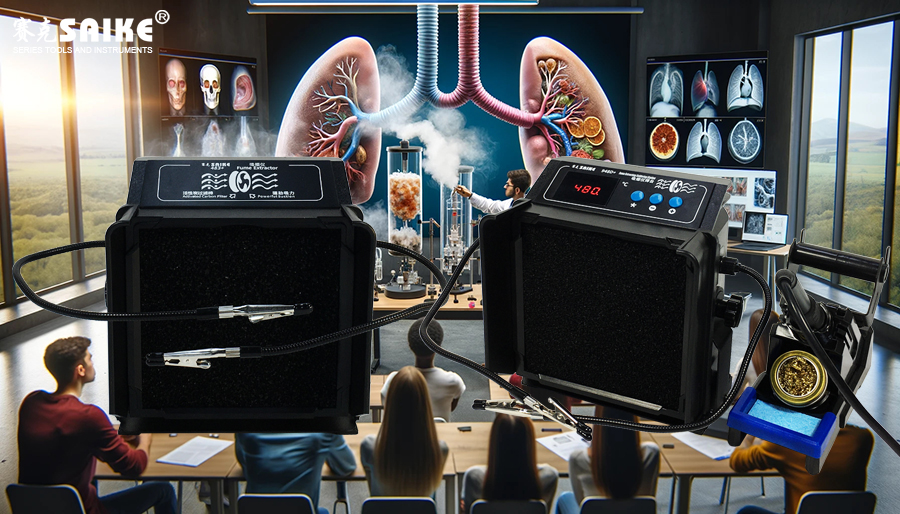
SK-YJ000XYY-KP 100026
In the welding industry, the use of smoking apparatus is not only a technical issue but also involves important aspects of occupational health and safety and professional ethics. Enterprises and operators must recognize that maintaining a good working environment is their moral and legal responsibility. This article will discuss the role of smoking apparatus in occupational health and safety and professional ethics, and how businesses and individuals can fulfill these responsibilities through the rational use of smoking apparatus.
I. The Importance of Occupational Health and Safety
Impact on Employee Health
Welding fumes contain various harmful substances such as lead, cadmium, chromium, and nickel. Long-term inhalation of these substances can severely harm the respiratory system, nervous system, and overall health of welders. Therefore, the use of smoking apparatus has become a basic measure to protect the health of employees.
Regulatory Requirements
Occupational safety and health regulations in most countries require employers to take effective measures to reduce hazards in the workplace. This includes providing necessary equipment (such as smoking apparatus) and training to ensure that employees work in a safe environment.
II. Considerations of Professional Ethics
Employer’s Responsibility
From the perspective of professional ethics, employers have an obligation to protect the health and safety of their employees. This means investing the necessary resources in the workplace, such as smoking apparatus, to control exposure to harmful fumes. Neglecting this may result in employee health damage, triggering moral and legal responsibilities.
Employee’s Responsibility
Similarly, employees also have a responsibility to participate in protecting their own and colleagues’ health and safety. This includes the proper use of smoking apparatus and other safety equipment, compliance with workplace safety operating procedures, and timely reporting when equipment malfunctions or deficiencies are discovered.
III. Implementation Strategies
Education and Training
– Regular Training: Ensure that all employees receive training on how to properly use the smoking apparatus and its importance to health.
– Health Awareness Education: Raise employees’ awareness of occupational hazards and enhance their consciousness of using personal protective equipment.
Supervision and Maintenance
– Regular Inspection: Establish regular inspection and maintenance procedures for the smoking apparatus to ensure that the equipment is always in good working condition.
– Continuous Improvement: Continuously update and improve workplace safety measures based on the latest safety research and technological advancements.
Transparency and Communication
– Open Communication Channels: Establish a transparent communication mechanism that allows employees to freely discuss safety issues and make improvement suggestions.
– Feedback and Action: Provide timely responses and necessary actions to employees’ safety concerns, ensuring that all issues can be effectively resolved.
IV. Summary
The use of smoking apparatus is an important component of occupational health and safety and professional ethics in welding workplaces. By providing appropriate equipment and training, as well as establishing an effective safety management system, enterprises can not only protect employees from harmful substances but also enhance the moral standards and legal compliance of the entire organization. Employees and employers should work together to ensure workplace safety and health, which is their shared responsibility and obligation.


